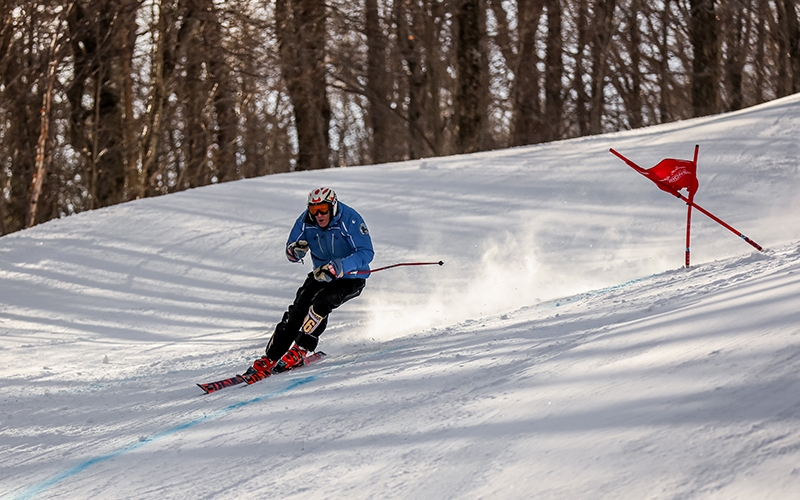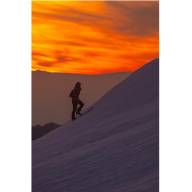Race day is a gathering of wits. No mistakes here. In the morning, polishing the edges with a fine-grit diamond stone, you would naturally flip the stone over and first peel off any residual wax that melted over the edges. You would not clog up that beautifully abrasive diamond tool. No, that would be a mistake, and there are no mistakes here. It’s race day; it’s the Kandahar at Mad River Glen.
Prior to a start, a racer rarely stands still. This is invaluable time -- to prepare, the last minutes, often very productive minutes. Stretching, walking uphill to warm the body, elevating the heart rate and then, noticing that, calming that. It is time to achieve calm. The calm before the storm. The Kandahar inspection run itself was some of the most exciting ski racing that I have ever experienced, second only to the race run.
Luck has no place in ski racing. Whether you get an early or a late start might make a difference, but you have no control over that. You make your own luck by showing up sharp-edged, sharp-witted, waxed, trained, loose and ready. Superstition and worries are also non-starters, they obtain no purchase in the race-prepped mind. A racers’ consciousness is completely filled with the immediacy of the challenge. It is an ideal mind-clearing event.
Inspection revealed the wild ride that was soon to come. Excitement levels would be peaking here. It would be best to start from a position of calm rather than having the excitement factor spiking too often or too highly. It is time to stop the vibrating, the shivering. What? Shivering? Stop that immediately and then you can get to the vibrating nervous system and calm that too, a yogic calm.
Trimming line . . .what a perfect analogy for efficiency in skiing. Tighter to the gate, you can shorten the length of terrain that is skied and, in theory, you can have a faster run. Look what that thought leads to: technique and terrain mastery. Can you ski that high, that close to the gate and still round out the turn enough to set up for the next one?
Skiing at MRG normally offers so much visual stimulation. While rolling over rises, rolls and icefalls, it is hard to decide where to place the skis. There are so many interesting options -- not so in the Kandahar. Several gates had only two options: a nice smooth line right up against the gate, or the rutted-out racing line that was 2 to 3 feet away.
There was this quiet on the tuck along the Bunny traverse. It felt too slow and too quiet until there was this loud yelling that I noticed as I began to scramble around the gates. Oh, that was me…AAAAhhh, holding on for all I was worth and failing to carve uphill of the race rut.
The Kandahar was kind-of-hard. Jim Komarmi is a race director with “The Right Stuff.” He and the MRG race crew deserve a Kandahar plaque for the planning and elegant execution of this exciting race.
Meanwhile on the sundrenched deck, a woman from Germany was open to discussing the state of the United States from a European perspective. She described the states to her friends back home as 50 countries, each with their own unique attributes. The New England region, she found, seemed very old-fashioned, behind the times in comparison to the uber progressive Europe as well as much of the U.S. Concurrently, we overheard a Mad River Glen shareholder discussing the decision process that led up to the “new chair.” This discussion continued as we looked up to observe the Single chair, gently carrying one skier at a time uphill, very much to her point. New Englanders do not like change. They are true conservatives, or perhaps better described as progressive preservationists. “If it ain’t broke, don’t fix it.” The Single chair is sufficient to carry enough skiers uphill to match the skiing. New Englanders are reserved, Thoreau types, they practice “Yugen” in Japanese aesthetics, being conservative enough to know when enough is enough. They know when enough uphill capacity or enough speed, or enough development or enough anything . . .that there is a point that is enough, and the wise recognize it. It is the conserving of what is good. And what is the good? Robert Pirsig asked that question in Zen and “The Art of Motorcycle Maintenance.” “And what is good, Phaedrus, and what is not good -- Need we ask anyone to tell us these things?”













